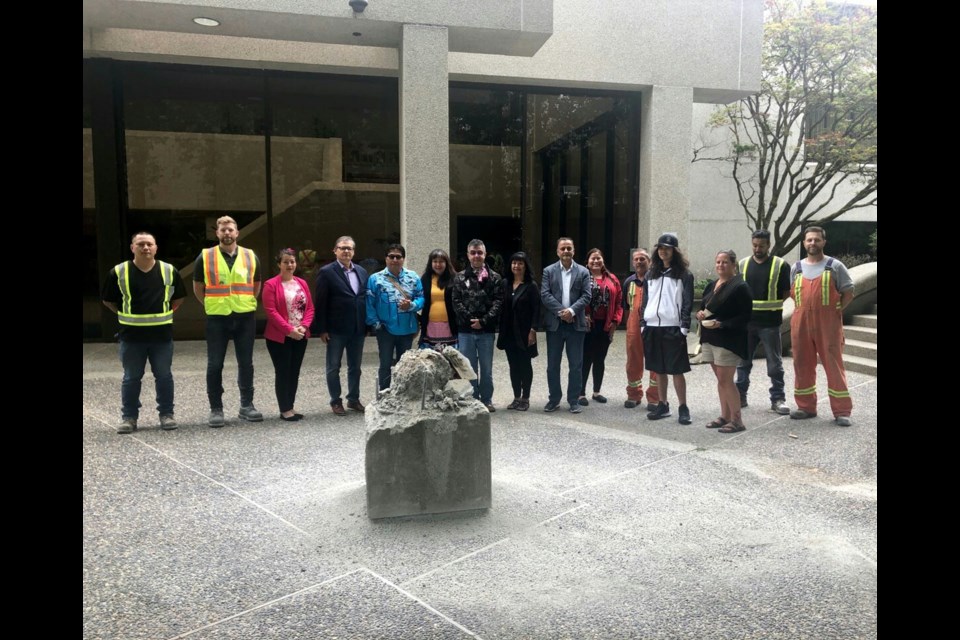Tsilhqot'in, Qayqayt and Squamish Nations witnessed the removal of the Judge Matthew Begbie statue in New Westminster on Saturday.
Coun. Chuck Puchmayr said the city decided to remove the statue as discreetly as possible so it wouldn’t open new wounds on those adverse to the statue’s removal and would allow Indigenous witnesses to attend without fear of conflict.
In May, council supported a motion to remove the Begbie statue from in front of the provincial courthouse on Carnarvon Street. At the same time, council agreed to: engage in a conversation with the Tŝilhqot’in Nation about the history and legacy of Begbie and the effects his decisions had on generations of their people; work with the city’s museum and archives, the community and the Tŝilhqot’in Nation to find an appropriate place for the statue; and engage in a process of consultation to find an appropriate place to tell the history of the Chilcotin War.
The provincial government apologized to the Tŝilhqot’in Nation in 2014 for the wrongful execution of the six chiefs and the federal government fully exonerated the chiefs of any wrongdoing in 2018.
The Tŝilhqot’in National Government supported the city’s decision to remove the statue, saying it represents a legacy of pain and tragedy that’s still felt to this day.
Begbie, who was British Columbia’s first chief justice, presided over an 1864 murder trial in Quesnel of five Tŝilhqot’in chiefs who were found guilty and sentenced to hang. The following year, a sixth chief, Chief Ahan, was tried, convicted and sentenced to death in New Westminster – in a spot about 150 metres away from where the statue stood until Saturday.
Each July, a Tŝilhqot’in delegation visits New Westminster to commemorate Ahan’s hanging on July 18, 1865. As part of its reconciliation efforts, New Westminster city council has approved $12,000 to fund a Chief Ahan commemorative event and visits with the Tsilhqot’in Nation.
A staff report states that work with the Tsilhqot’in is an important component of the reconciliation work the city is undertaking. The city hopes that the removal of the Begbie statue from in front of the courthouse on Carnarvon Street will pave the way to a formal sister city relationships with the two communities.
In the past, New Westminster established sister city relationships with Moriguchi, Japan (1963), Quezon City, Philippines (1991) and Lijiang, China (2002), and friendship city ties to Zhenjiang, China (2008) and YunFu City, China (2009). Council has discussed the possibility of creating a sister community relationship between the City of New Westminster and the Tl’etinqox government.
Coun. Mary Trentadue said she’d like staff to report back on the city’s sister city program and international relationships, suggesting council may want to relook at some of the sister city programming and readjust it to consider some of the future reconciliation work planned in New Westminster.
“I know a lot of this reconciliation work is also going to require some new budget funding,” said Mayor Jonathan Cote. “I think council has definitely identified that as a high-priority area over the next few years.”



